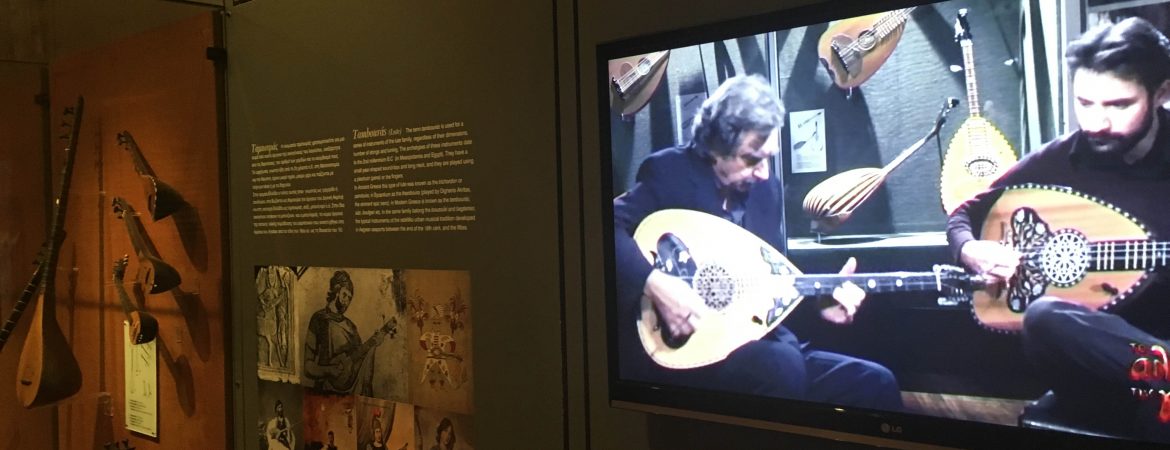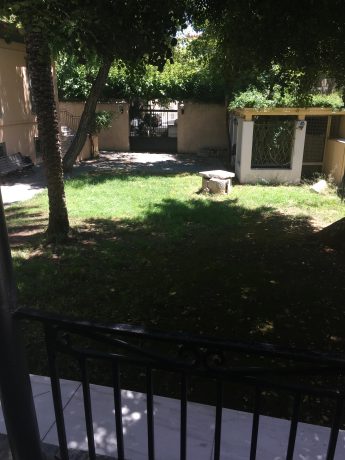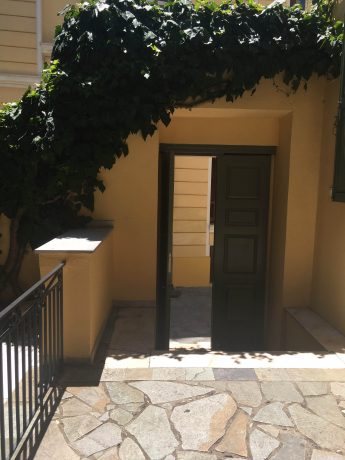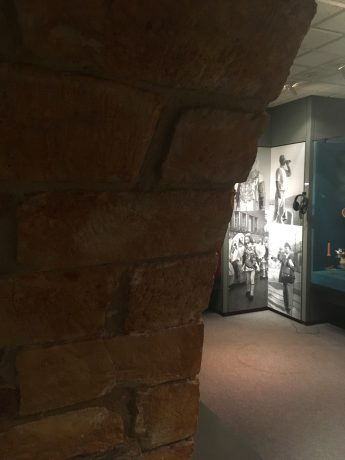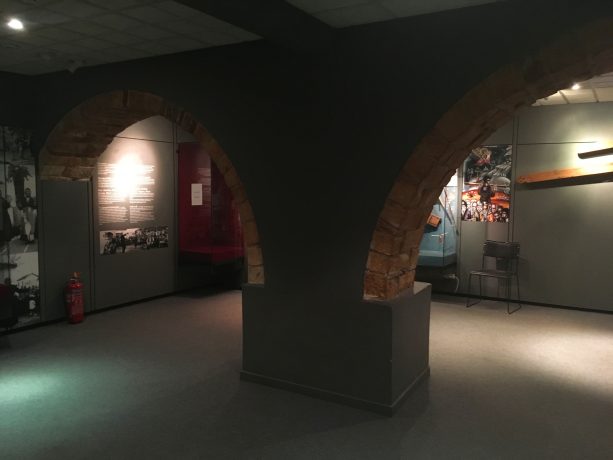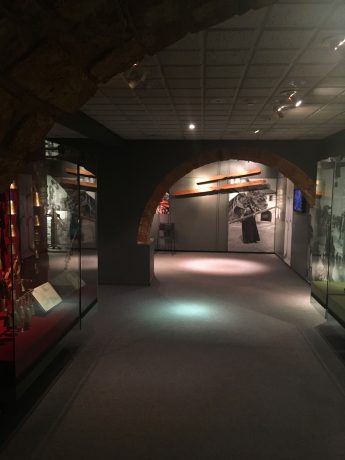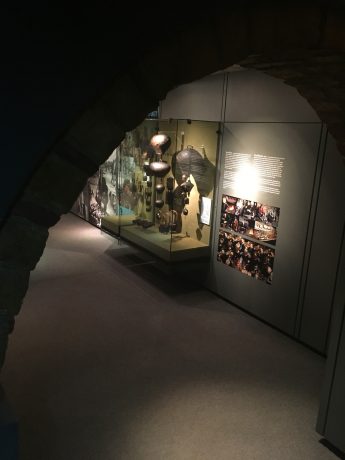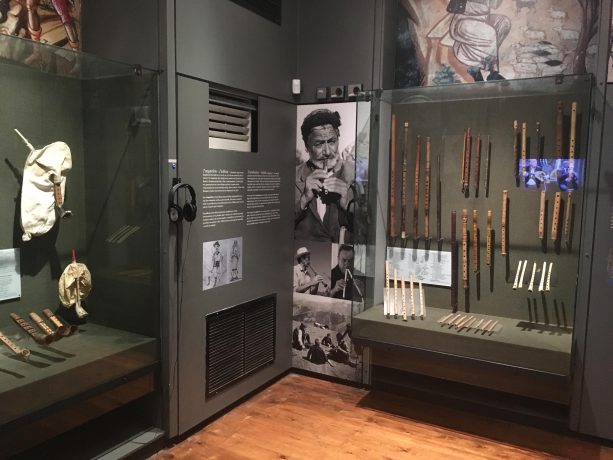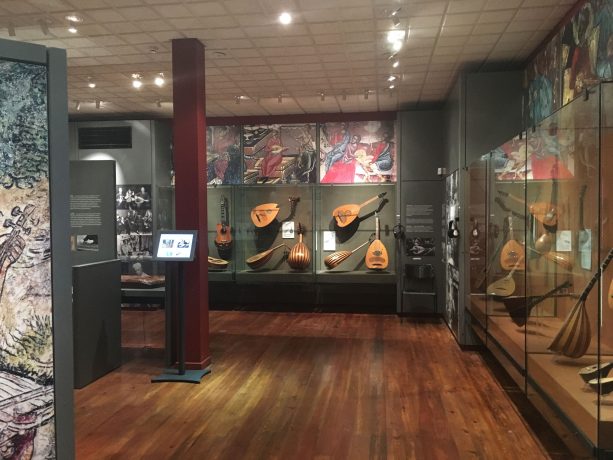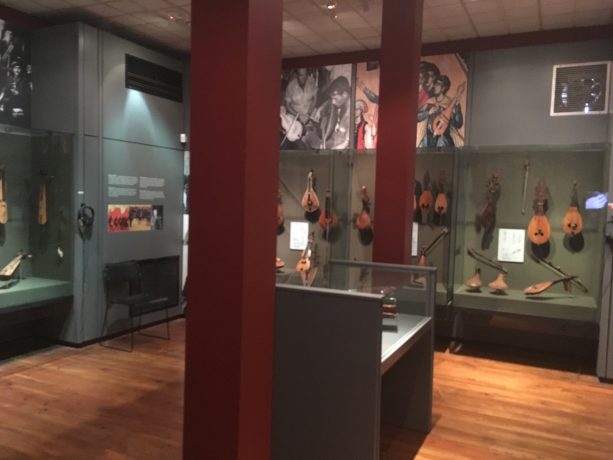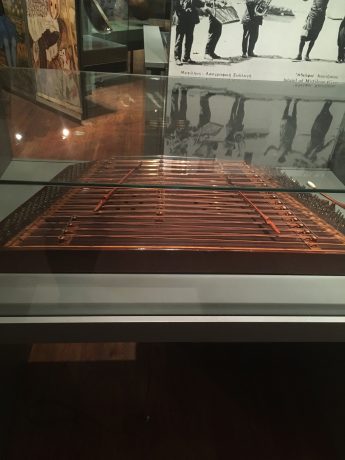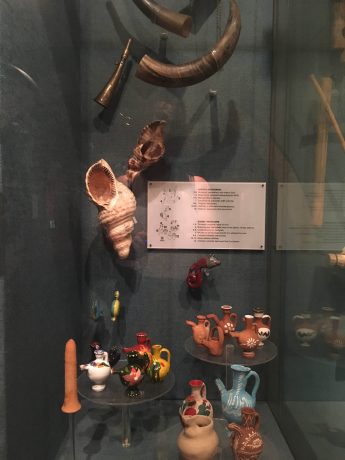The neighborhood of Plaka is associated with ancient Greek monuments, the Acropolis, narrow streets and tourist shops. There is also a hidden gem in this area: a museum about Greek folk music and instruments. This museum is a nice getaway from the many archaeological sites and antiquities found in the area.
The Museum of Greek Folk Instruments' Foivos Anogianakis Collection recently became part of the Museum of Greek Folk Art. In June 1991, the museum opened its doors to the public and presented the incredible collection of more than 1200 folk instruments from the 18th century until today. The collection belongs to Foivos Anogianakis, a musicologist who conducted research on the matter that lasted around 40 years. The museum is composed of three floors, each focusing on a different group of instruments. Groups are created based on the material that produces the sound, from membrane to strings. In each case, there is an audio system that allows visitors to listen and understand each instrument's sound.


The museum is located in an 1840’s house in Plaka, next to the Roman Agora. The mansion belonged to Georgios Lassanis, a prominent figure of the 1821 war for independence. Lassanis, born in Kozani in 1793, was also a politician and a theatrical playwright. He was forced by Ali Pasha, an Ottoman ruler, to leave Greece and headed to Budapest. In 1813, he went to Leipzig, Germany and studied philology for four years. Then, in 1818, he joined the Society of Friends (“Filiki Eteria”), a secret 19th century organization whose purpose was to overthrow the Ottoman rule of Greece. After the war, he served as a minister of military and finance. He died in Athens in 1870.
The Lassanis Mansion was built in 1833-1837 and is one of the first samples of Athenian architecture during King Otto’s reign. Respecting the neoclassical style that was dominant at that time, the building is plain without outdoor decorations; its lines are simple adding an element of symmetry and harmony. Just like many of the 19th century buildings found in the area, this mansion overlooks to a small but beautiful garden.
The interior also resembles the exterior, simple without many decorations. The two-store mansion also features a basement that hosts the exhibition. Although the building was renovated to host the museum, many features have been preserved. The two floors have kept their original wooden floors; the floors are connected by a beautiful wooden staircase that travels visitors back in time. The newest addition is the dark painted walls that contrast with the artifacts. The basement is decorated by stone arches, a reference to traditional Greek village houses.


This museum is great for music lovers and presents a music genre forgotten by many along with instruments that are hardly ever used anymore, such as seashells. If you are lucky enough, you may happen to see one of the impromptu concerts in the garden!
